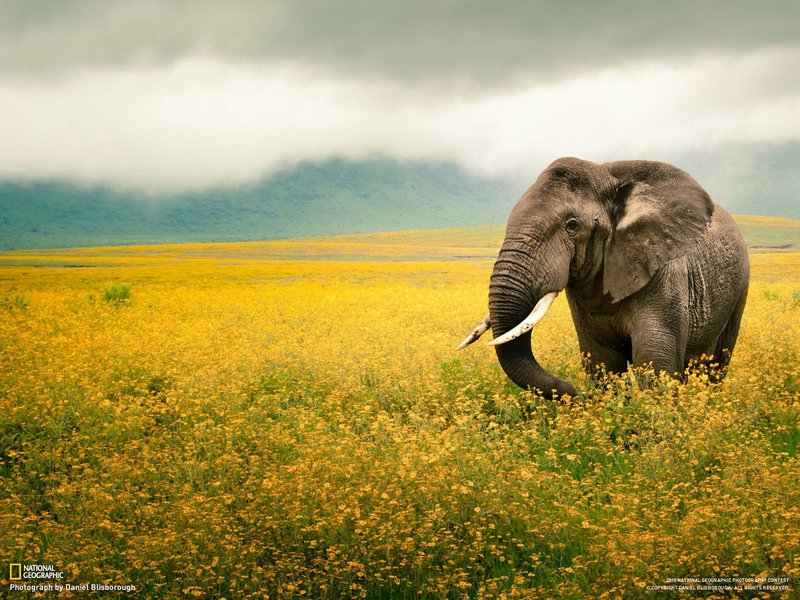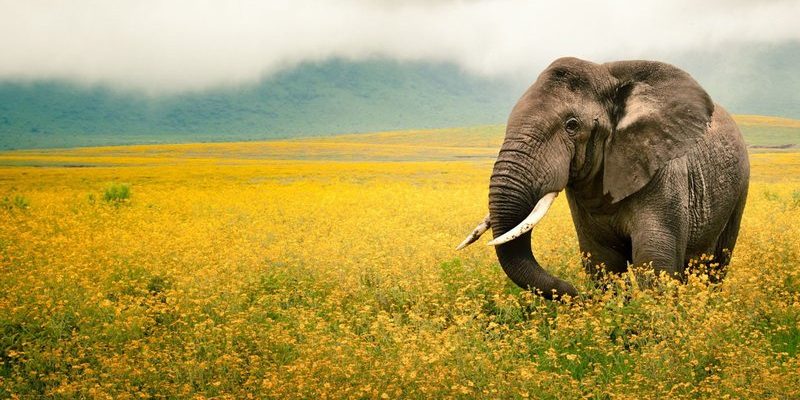
Imagine being in a place where water is scarce, temperatures can soar, and food can sometimes be hard to find. African elephants face these challenges daily. They’re like nature’s giants, equipped with tools and strategies that enable them to beat the odds. Let’s dive into the ways these incredible creatures manage to endure and thrive despite their often unforgiving surroundings.
Physical Adaptations for Harsh Living Conditions
One of the most striking features of African bush elephants is their size. Adult males can weigh over 12,000 pounds, and their massive bodies are built to withstand tough conditions. But it’s not just their bulk that helps them survive. Their long trunks are multi-functional tools that can be used to dig, reach high branches, or even manipulate water sources. Imagine having a Swiss Army knife attached to your face; that’s what an elephant’s trunk is like!
The elephants’ large ears serve a purpose, too. They act like natural air conditioners. When it’s hot outside, they flap their ears to cool their blood and regulate their body temperature. It’s as if they have built-in ventilators! Plus, their thick skin can withstand the sun’s harsh rays, and they often cover themselves in mud or dust—like a natural sunscreen that also protects against insect bites.
Nourishment Strategies
Finding food is critical when resources are low. African bush elephants are herbivores, meaning they eat plants. They can consume an astonishing amount of up to 300 pounds of vegetation each day! They have strong molars designed for grinding tough grasses and bark, which helps them get more nutrients from their meals. But here’s the secret: they’re not picky eaters.
These elephants can adapt their diet to whatever is available. During dry seasons, they might rely more on tree bark, while in greener months, they munch on fresh grass. Think of them as nature’s recyclers, making use of what’s around them to ensure they don’t go hungry.
Water Conservation Techniques
Water is life, especially for elephants. In their native habitats, they often travel over 30 miles in search of water. Here’s the thing: when they find a water source, they’re not just quenching their thirst. They’re also creating a communal space where other wildlife can come and benefit from the water, too.
When conditions are really tough, elephants have been observed digging in dry riverbeds to reach underground water. It’s a remarkable display of ingenuity! They might even use their trunks to spray water onto themselves, creating a cooling mist while they bathe. It’s like their version of taking a refreshing shower on a hot day!
Social Structures and Survival
Social behavior plays a vital role in the survival of African bush elephants. These elephants often live in matriarchal herds, led by the oldest and wisest female. This structure isn’t just for socializing—it’s a survival strategy. The matriarch knows where to find resources, and her experience is essential in tough times. The herd works together, helping each other find food and navigate the harsh terrain.
You might find it interesting that elephants are incredibly empathetic. They mourn the loss of herd members and often comfort one another, which strengthens their bonds. This emotional connection can be crucial for survival, as it helps the group stay united and supports the younger elephants in learning necessary survival skills.
Environmental Adaptations and Migration Patterns
Elephants are experts at adapting to their environment. They use their understanding of seasonal changes to migrate to areas where resources are more plentiful. During the wet season, they might move to regions with abundant grasslands. When dry spells hit, they travel to rivers or other water sources. It’s like they have a built-in GPS, following the rhythm of nature.
These migrations aren’t just about food and water; they also help maintain the ecosystem. As elephants move, they clear pathways, knock down trees, and create water holes. This promotes new growth and ensures that other species benefit from their movements. It’s a perfect example of how their survival is linked to the health of their habitat.
Human-Elephant Interactions
The relationship between elephants and humans can be complicated. As humans encroach on their habitats, elephants often have to adapt to new challenges. This might mean navigating through farmland or learning to avoid dangerous areas. Some elephants have even altered their migratory paths to avoid roads or settlements.
Conservation efforts are critical to helping African bush elephants thrive amidst these challenges. Organizations work tirelessly to create protected areas and educate communities about the importance of these gentle giants. Every step taken to support elephants not only helps them survive but also contributes to a richer, more diverse ecosystem.
The Role of Conservation in Elephant Survival
Conservation is crucial for ensuring the future of African bush elephants. With many regions experiencing habitat loss and poaching threats, every effort counts. Creating reserves and protected areas allows elephants to roam freely and access vital resources. It’s similar to providing them with a safe neighborhood where they can live without fear.
Education plays a significant role here, too. By raising awareness of the importance of elephants, communities can learn how to coexist peacefully. Sustainable practices can help reduce human-elephant conflicts, allowing both to thrive. With every small action, we can contribute to preserving the incredible adaptability of these animals.
In a world filled with challenges, African bush elephants are the ultimate survivors. Through their physical adaptations, social structures, and reliance on community, they embody resilience. Their ability to navigate harsh environments, find nourishment, and maintain their social bonds is truly inspiring.
As we continue to learn about these majestic creatures, let’s remember that their survival rests not just on their own strategies but also on our commitment to conservation. By protecting their habitats and supporting their needs, we can help ensure that these incredible giants of the savanna thrive for generations to come. After all, when it comes to surviving in harsh environments, the strength of the herd—and our support—can make all the difference.

